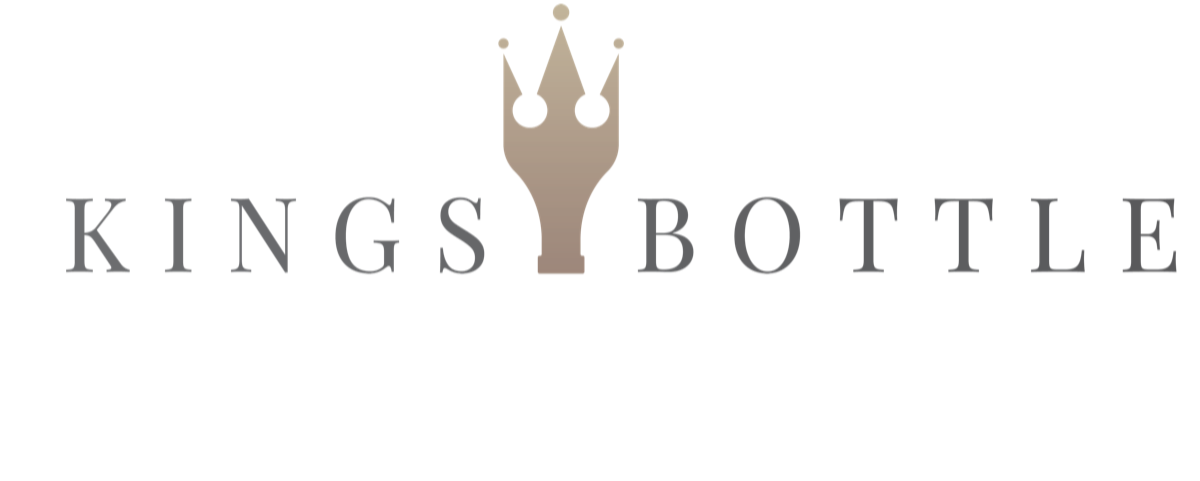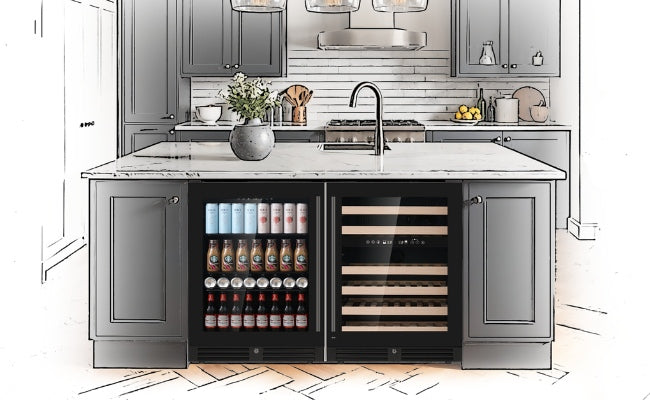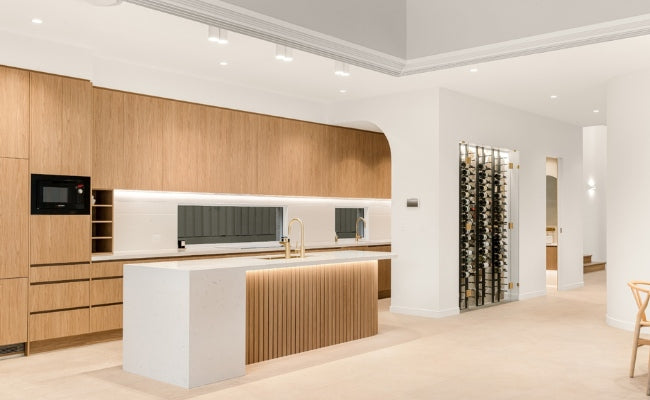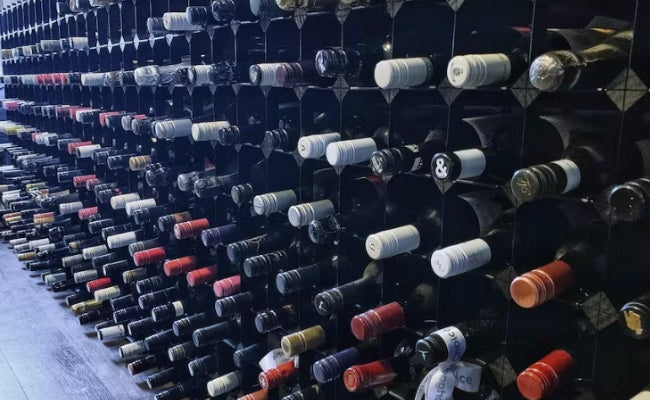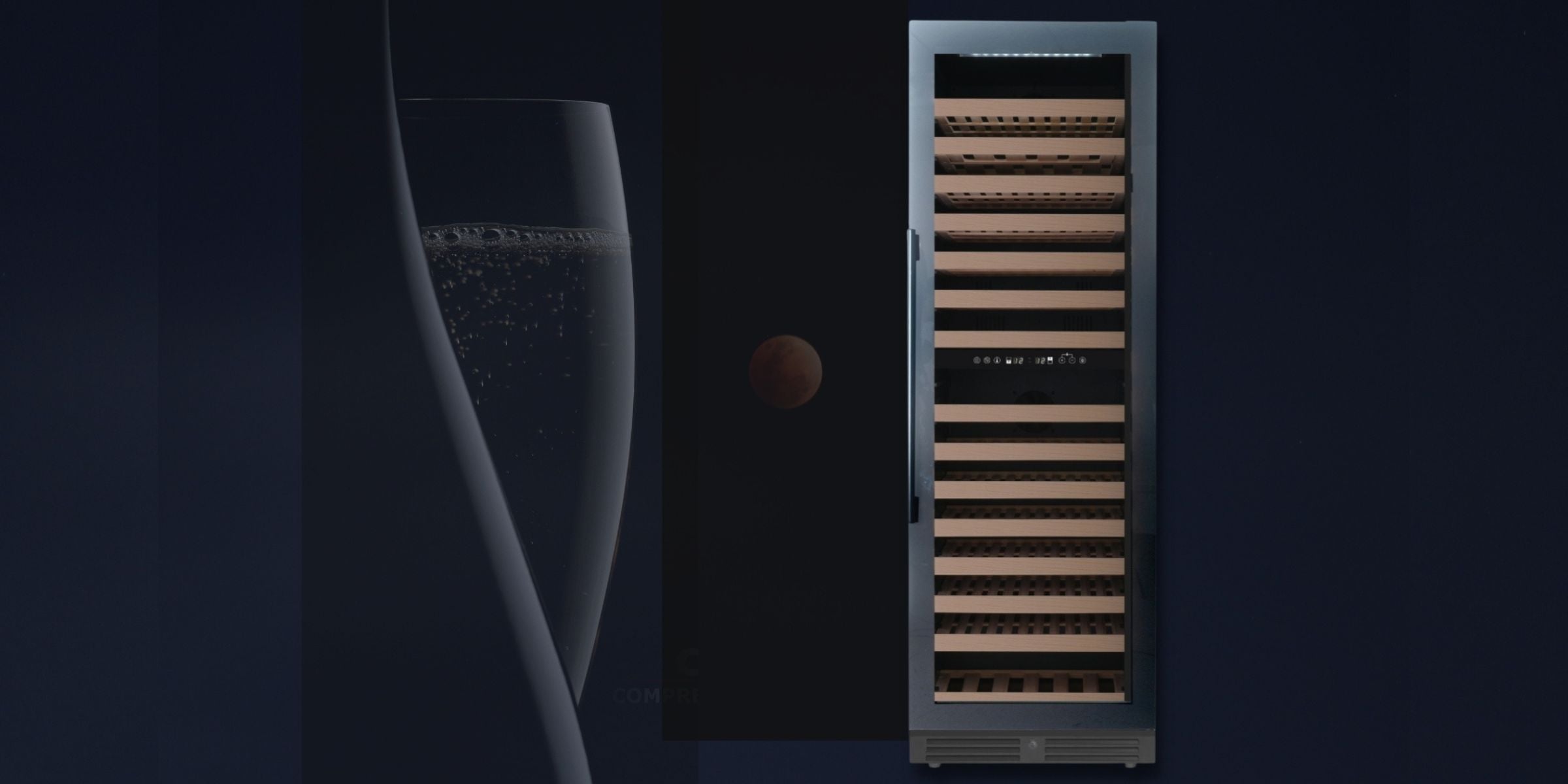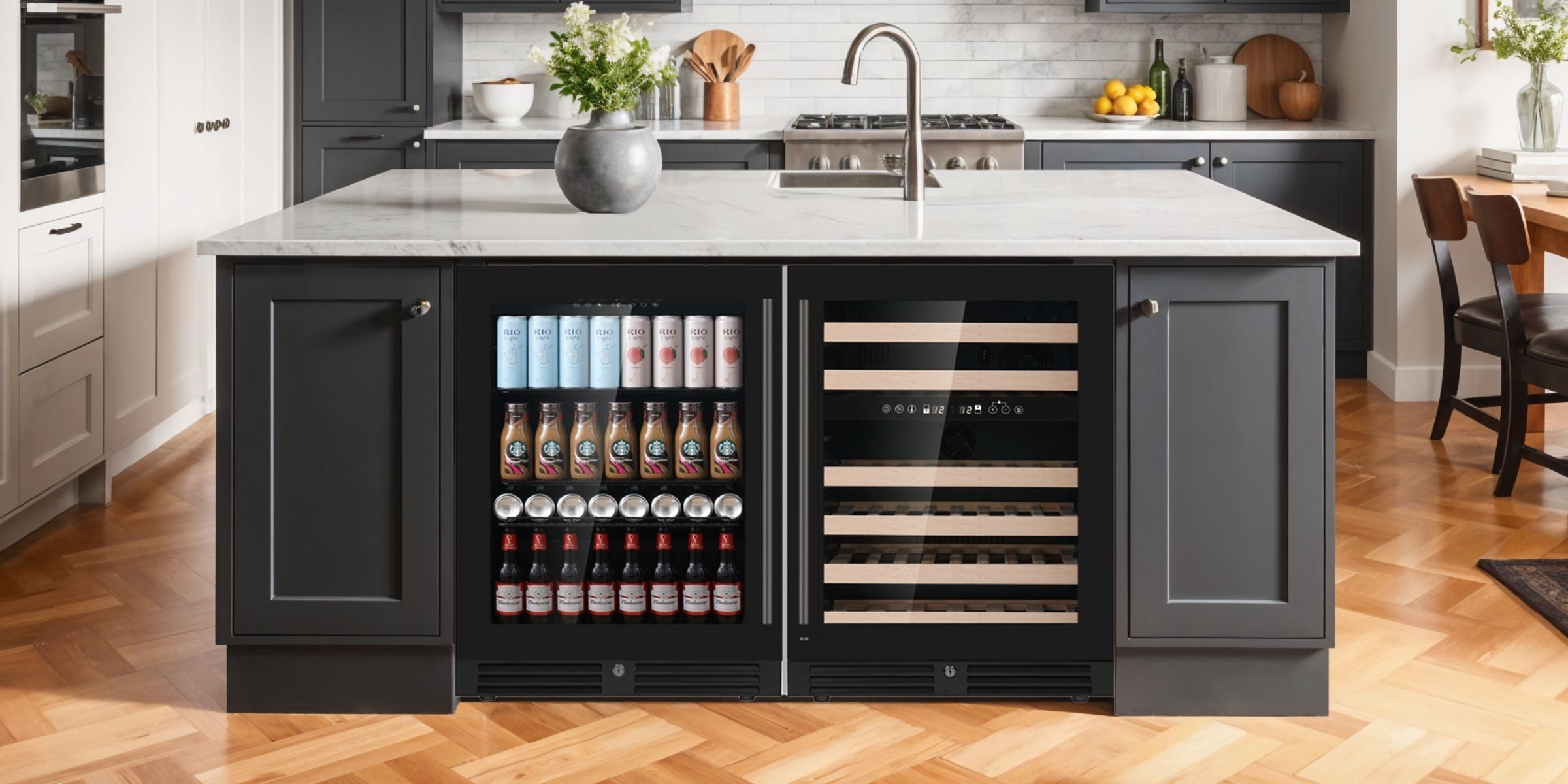Key Takeaways
- Maintaining the correct wine fridge temperature is crucial to preserving wine flavor and quality.
- Recognizing uneven cooling, noise, or condensation can help diagnose temperature problems early.
- Troubleshooting steps include checking the thermostat, inspecting door seals, and cleaning condenser coils.
- Regular maintenance and professional help with complex issues ensure long-term wine storage performance.
Have you ever opened a bottle of wine only to find that it's not chilled to the perfect temperature? If you own a wine fridge, then you know how important it is to have precise temperature control to preserve the flavor and quality of your wine. In this guide, we will explore the common temperature issues that can arise with wine fridges and provide you with troubleshooting tips to help you resolve them.
Understanding Your Wine Fridge
Before we dive into troubleshooting, let's take a moment to understand the basics of a wine fridge. A wine fridge, also known as a wine cooler or wine cellar, is a specialized appliance designed to store and chill wine bottles. Unlike a regular refrigerator, a wine fridge provides a consistent temperature, humidity, and vibration control to ensure optimal wine storage conditions.
The most crucial aspect of a wine fridge is maintaining the correct temperature. The temperature directly affects the aging process, flavor development, and overall quality of your wine.
The Importance of Correct Wine Fridge Temperature
Proper wine storage temperature plays a vital role in preserving the taste and aroma of your wine. The ideal temperature range for most wines is between 45°F and 65°F (7°C and 18°C). Within this range, red wines should be stored at the warmer end, while white wines are best stored at the cooler end.
If the temperature inside your wine fridge deviates from the ideal range, it can lead to significant issues. Improper temperatures can cause premature aging, spoilage, or flavor alterations in your wine. Therefore, maintaining the correct temperature is essential to fully enjoy the complexity and character of your favorite bottle.
Common Types of Wine Fridges
There are various types of wine fridges available on the market, and understanding their differences can help you identify and troubleshoot temperature issues more effectively.
- Single-Zone Wine Fridges: These fridges feature a single temperature-controlled zone, making them ideal for storing only one type of wine. If you own a single zone wine fridge, it's crucial to set the temperature based on the wine you plan to store.
- Dual Zone Wine Fridges: Dual zone fridges offer two separate compartments with independent temperature controls. They are ideal for storing different types of wine simultaneously. Ensure that you have set the correct temperature in each zone to avoid any temperature-related troubles.
- Built-In Wine Fridges: Built-in wine fridges are designed to be installed directly into cabinetry or under counters. These fridges often have integrated temperature controls and ventilation systems to provide a seamless storage solution.
Another type of wine fridge worth mentioning is the thermoelectric wine fridge. Unlike traditional compressor-based wine fridges, thermoelectric wine fridges use a solid-state cooling system that operates silently and without any moving parts. This makes them an excellent choice for wine enthusiasts who prefer a quiet storage environment.
When selecting a wine fridge, it's essential to consider factors such as capacity, energy efficiency, and noise level. Larger wine fridges with higher capacity are suitable for collectors or those who entertain frequently, while smaller fridges are perfect for casual wine enthusiasts or those with limited space.
Identifying Wine Fridge Temperature Problems
Now that we have covered the basics, let's delve deeper into the world of wine fridge temperature management. Understanding the nuances of temperature control is essential for preserving the quality and flavor of your precious wine collection. In addition to knowing how to set the right temperature, it's crucial to be able to identify potential temperature problems that may arise.
Ensuring that your wine fridge is operating at the optimal temperature is key to maintaining the integrity of your wines. Let's explore some common signs that may indicate your wine fridge temperature is off and needs attention.
Signs Your Wine Fridge Temperature is Off
There are several indicators that your wine fridge temperature may be off:
- Uneven cooling throughout the fridge
- Frequent temperature fluctuations
- Condensation or frost buildup
- Unusual vibrations or loud noises
Keep a vigilant eye on these signs to catch any temperature-related issues early on. Detecting and addressing problems swiftly can make a significant difference in preserving the quality of your wines and preventing any potential damage.
Potential Consequences of Incorrect Temperatures
The consequences of incorrect wine fridge temperatures can be detrimental to your cherished wine collection. Here are a few potential issues you might encounter:
- Wine spoilage and oxidation
- Loss of flavor and aroma
- Compromised aging process
- Damage to labels and corks
By recognizing the impact of temperature fluctuations on your wines and taking proactive measures to address any temperature irregularities, you can safeguard the quality and longevity of your collection. Stay vigilant, stay informed, and savor every sip of your perfectly preserved wines.
Basic Troubleshooting Steps for Wine Fridge Temperature Issues
If you notice any signs of temperature inconsistencies or suspect that your wine fridge is not maintaining the desired temperature, you can try the following troubleshooting steps to address the problem.
Ensuring your wine fridge maintains the optimal temperature is crucial for preserving the quality of your wine collection. Temperature fluctuations can affect the aging process and ultimately impact the taste of your wines. By following these troubleshooting steps, you can help prolong the lifespan of your wines and enjoy them at their best.
Checking the Thermostat
The first step is to check the thermostat settings. Make sure that the temperature selected corresponds to the type of wine you are storing. Adjust the thermostat as necessary and allow the fridge to stabilize for a few minutes before reassessing the temperature.
If the thermostat settings are correct but the fridge still fails to maintain the desired temperature, there may be an issue with the thermostat itself. In this case, it's best to contact a professional appliance repair service to diagnose and fix the problem.
Understanding the ideal temperature range for different types of wine is essential for proper storage. For example, red wines are typically stored between 55-65°F (12-18°C), while white wines are best kept between 49-55°F (9-12°C). By adjusting the thermostat to the appropriate temperature range, you can ensure your wines age gracefully and develop complex flavors.
Inspecting the Door Seals
Another common cause of temperature issues is faulty or damaged door seals. Over time, the rubber gaskets that seal the fridge door can become worn or torn, allowing cold air to escape and warm air to enter. Inspect the door seals carefully for any visible damage or gaps. If you notice any issues, consider replacing the seals to ensure a proper seal and prevent temperature fluctuations.
Regularly cleaning the door seals with a mild detergent and warm water can also aid in maintaining their effectiveness. Additionally, applying a thin layer of petroleum jelly to the seals can help create a tighter seal and improve insulation.
Advanced Troubleshooting Techniques
If the basic troubleshooting steps fail to resolve the temperature issues in your wine fridge, it may be time to employ some advanced techniques or seek professional assistance.
Dealing with Electrical Issues
Electrical problems can sometimes be the culprit behind temperature fluctuations. Check that the wine fridge is receiving a stable power supply and that the power cord is properly connected. If necessary, try plugging the fridge into a different electrical outlet to rule out any issues with the power source.
If the electrical components or wiring within the fridge are faulty, it's best to consult a qualified electrician or appliance repair technician to diagnose and repair the problem.
When it comes to electrical issues, it's important to exercise caution and prioritize safety. Working with electricity can be dangerous, so if you're not confident in your abilities or knowledge, it's always best to seek professional help. A licensed electrician or repair technician will have the expertise and experience to handle any electrical problems with your wine fridge safely and effectively.
Addressing Cooling System Problems
Temperature issues can also arise from problems with the cooling system of your wine fridge. If you suspect that this is the case, try cleaning the condenser coils, located either at the back or bottom of the fridge. Dust and debris can accumulate on the coils over time, reducing their efficiency and causing temperature inconsistencies. Gently vacuuming or using a coil brush to remove any buildup can help improve cooling performance.
When to Call a Professional
While some wine fridge temperature issues can be resolved with basic troubleshooting and DIY methods, certain situations may require the expertise of a professional.
Understanding the intricacies of wine fridge technology is crucial when determining whether a problem can be fixed independently or if professional intervention is necessary. Factors such as compressor issues, refrigerant leaks, or electrical malfunctions may be beyond the scope of a typical homeowner's repair abilities.
Recognizing Unsolvable Issues
If you have exhausted all troubleshooting options and are still experiencing temperature problems, it may be an indication of a more significant underlying issue. At this point, it's best to acknowledge that the problem is beyond your expertise and seek professional assistance. Attempting to fix complex issues without the necessary knowledge and tools can lead to further damage.
Delving into the internal components of a wine fridge without proper training can not only void warranties but also pose safety risks. Professional technicians are equipped with the expertise and tools needed to diagnose and repair intricate problems effectively.
Finding a Reliable Appliance Repair Service
When selecting a professional appliance repair service, look for one that specializes in wine fridge repairs. Ensure they have experience with your specific brand and model. Reading customer reviews and seeking recommendations from trusted sources can also help you find a reliable and reputable service provider.
Preventive Measures to Avoid Future Temperature Issues
Prevention is always better than a cure. By implementing some preventive measures, you can reduce the likelihood of encountering temperature issues with your wine fridge.
Regular Maintenance Tips
Maintain your wine fridge by following these simple yet effective tips:
- Regularly clean the interior to remove any spills or residue that may affect temperature control.
- Keep the fridge away from direct sunlight and heat sources.
- Monitor the humidity levels and use a hygrometer if necessary.
- Inspect and clean the condenser coils every six months to ensure optimal cooling.
FAQ
What are the most common wine fridge temperature issues?
Common issues include uneven cooling throughout the fridge, frequent temperature fluctuations, condensation or frost buildup, and unusual vibrations or loud noises. These problems can compromise the quality and preservation of your wine, making early detection and troubleshooting essential for maintaining optimal wine storage conditions.
How do I know if my wine fridge temperature is incorrect?
You may notice uneven cooling, frequent temperature fluctuations, condensation or frost inside the fridge, or unusual sounds or vibrations. These are warning signs that the fridge isn’t maintaining the ideal temperature. Early recognition of such indicators allows you to address problems before your wine is affected.
What is the ideal temperature range for storing wine?
The ideal range for most wines is between 45°F and 65°F (7°C and 18°C). Red wines are best stored toward the warmer end of this range, while white wines should be kept at the cooler end. Maintaining this temperature window preserves flavor, aroma, and the aging process of your wine.
How do single zone and dual zone wine fridges differ in temperature control?
Single zone wine fridges have one temperature setting for all contents, making them suitable for one type of wine. Dual zone fridges feature two independently controlled compartments, allowing you to store red and white wines at their respective optimal temperatures simultaneously, giving greater flexibility in storing different wine types.
Why does my wine fridge experience temperature fluctuations?
Temperature fluctuations can result from incorrect thermostat settings, faulty or damaged door seals, dirty condenser coils, or electrical issues. Even placement near heat sources or frequent door opening can affect stability. Identifying and addressing these causes is essential to achieving consistent temperature control in your wine fridge.
